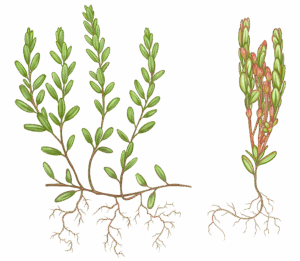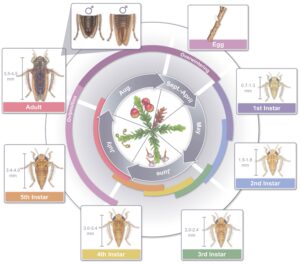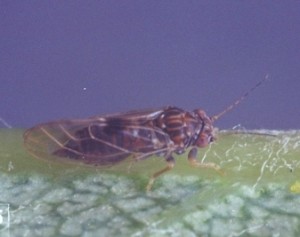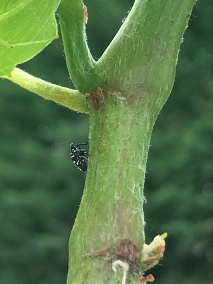Cornell Agricultural Workforce Development will be offering two Ag Supervisory Leadership courses for all agricultural operations starting in June for farms in the Northeastern Region including: Connecticut, Delaware, Maine, Maryland, Massachusetts, New Hampshire, New Jersey, New York, Pennsylvania, Rhode Island, and Vermont. Registration is currently open and closes on June 25. There are separate registration fees for New York residents and out of state residents. See below.
The courses available are:
ASL101-SP: Transición a Supervisor (in Spanish)
Transition to Supervisor helps to develop leaders and focuses on skills to improve communication and manage conflict. Learn how to recognize our inherent biases and how to build better working relationships. Gain insight into your leadership style and learn how to effectively lead diverse and multicultural teams.
Course topics include:
How to make the mental transition to supervisor
How to develop effective working relationships
Essential communication skills
How to be the leader of a multicultural group
How to build better working relationships
Course begins: Friday, June 20, 2025
Live Zoom discussions: Thursdays, June 26 – July 31, 4:00–5:00 PM ET
Register for ASL101-SP Transición a Supervisor
ASL106: Ethics and Employment Regulations (in English)
In ASL106: Ethics and Employment Regulations, you’ll explore how to implement fair and ethical labor practices in agriculture and why they matter. You’ll learn to recognize and prevent sexual harassment, understand wage and hour laws, and apply Equal Employment Opportunity regulations to foster a respectful, inclusive workplace. The course also covers best practices for handling employee discipline and termination.
Course topics include:
Ethics and sustainability
Equal Employment Opportunity, laws and implications
Hiring regulations and practices
Safety issues in agriculture
Farm employee housing
Compensation regulations
Being an ethical supervisor
Course begins: Friday, June 20, 2025
Live Zoom discussions: Thursdays, June 26 – July 31, 3:00–4:00 PM ET
Register for ASL106: Ethics and Employment Regulations
Course costs:
$275 for NYS residents/$325 for out-of-state residents
Scholarship Opportunity for Dairy Producers:
Thanks to the Northeast Dairy Business Innovation Center (NEDBIC), eligible dairy producers can apply for a $100 scholarship to help cover registration fees. Scholarships are available to participants from qualifying states in the Northeast, including Connecticut, Delaware, Maine, Maryland, Massachusetts, New Hampshire, New Jersey, New York, Pennsylvania, Rhode Island, and Vermont.
Questions? Email cu-agworkforce@cornell.edu
Follow us on Facebook: www.facebook.com/cornellagworkforcedevelopment
Archives for May 2025
Registration Open for 2 Agricultural Supervisor Training Courses: In English and Spanish
Blunt-nosed Leafhopper in Cranberries – May 2025
New Jersey cranberry growers are increasingly concerned about the rising populations of blunt-nosed leafhoppers (BNLH). This increase is likely linked to shifts in pest management strategies, including the adoption of reduced-risk insecticides and reduced use of broad-spectrum products, as well as the expansion of high-yielding cranberry varieties. BNLH is particularly troubling because it transmits a phytoplasma—a type of bacterium—that causes false blossom disease (Figure 1). Symptoms of this disease include stunted growth, deformed and sterile flowers that point upward, and a characteristic branching of upright shoots known as witches’ broom.

Figure 1. Healthy cranberry (left) and phytoplasma-infected cranberry (right). Drawing by Lindsay Lindhult.
Life Cycle
The blunt-nosed leafhopper (BNLH) has one generation per year (Figure 2). Its eggs overwinter embedded in cranberry stems and begin hatching in early May. Nymphs pass through five instars over the course of about 2 months. Adults emerge in early July, peak in mid to late July, and decline by the first week of August. These adults are characterized by their distinctive blunt heads and vary in color from light yellowish-gray to dark brown. Egg-laying occurs between July and August.
Damage
Nymphs and adults feed on cranberry plant juices using their piercing-sucking mouthparts. While this direct feeding causes little visible damage, BNLH is an important pest because it serves as a vector for the phytoplasma that causes false blossom disease.
Management
At this time of year eggs should be hatching and early-instar nymphs should be active (Figure 2).

Figure 2. Life cycle of blunt-nosed leafhopper. Drawing by Lindsay Lindhult.
Here are some guidelines to consider when managing BNLH in cranberries:
Identify Infestation Sites: The key to effective BNLH control is identifying infestation sites. The most reliable method for monitoring this insect is by using a sweep net. Before bloom, use sweep nets to collect nymphs. Because nymphs are small and difficult to see, bag and freeze the samples to kill them, then count the nymphs using a microscope or magnifying lens.
Sweep net Monitoring: Perform sweep sets of 25 sweeps each. The recommended number of sweep sets is:
- 1 per 1–10 acres
- At least 10 sweep sets per 10–20 acres
- 1 sweep set per 2 acres for areas larger than 20 acres
Lack of Economic Thresholds: Establishing an economic threshold for BNLH is difficult, as the proportion of false blossom infected individuals within BNLH populations is unknown and may vary by cranberry variety and location. Notably, higher infection rates have been observed in newer varieties, even when BNLH populations are low.
Control Measures: Control measures should be based on BNLH population trends relative to previous years, the history of insecticide applications, and the cranberry variety grown. If BNLH populations are increasing compared to prior seasons and the beds have not been treated for BNLH in the past 2–3 years, treatment should be considered.
Treatment Options: If treatment is necessary, consider the following options to manage BNLH:
- Timing: The best time for insecticide treatment is before bloom to target young nymphs.
- Insecticide Options:
Organophosphates: Diazinon (diazinon), Orthene (acephate)
Carbamates: Sevin (carbaryl)
Pyrethroids: Fanfare or Brigade (bifenthrin), Danitol (fenpropathrin)
Neonicotinoids: Assail (acetamiprid), Actara (thiamethoxam). Note: Use neonicotinoids with caution before bloom due to their potential negative effects on pollinators. These systemic insecticides can accumulate in pollen and nectar, posing a risk to bees.
Sulfoximine: Closer (sulfoxaflor). Although effective in small plot trials at the P.E. Marucci Center, more data are needed to confirm efficacy on larger commercial scales.
- Be aware that, while not scientifically proven, there are claims that Orthene and Sevin may reduce pollinator activity by repelling bees.
- Rotate insecticides with different modes of action to prevent the development of resistance in BNLH populations.
Tree Fruit IPM Report May 5, 2025
Tree Fruit Phenology: In southern counties peach orchards are shuck split to shuck off. Redhaven /PF-17 was at approximately at petal fall on April 19. Red Delicious is at petal fall. Cherries are at past bloom and petal fall depending on variety.
Peach:
Bacterial Spot: Copper formulations should be used starting at petal fall to suppress bacterial spot. Generally we recommend starting at 0.5 ozs metallic copper and gradually lowering the rate as the season progresses. The rate applied will depend on the formulation. Dr. Lalancette published a chart listing common copper formulations and rates for peach and nectarine applications. Avoid combining copper with captan especially if it has been overcast for several days. Also avoid acidic spray solutions when applying copper. Dr. Lalancette has published a handy guide for copper applications in early covers. Antibiotics containing oxytetracycline may also be used and may offer slightly more residual activity during long wetting periods.
Peach Scab: In addition to Rusty Spot and Bacterial Spot, Peach Scab requires protective applications starting at petal fall. Peach scab cankers begin to expand at bloom and by shuck split begin to shed spores during wetting periods. Topsin, Topsin/Captan combinations, Flint Extra, Inspire Super, and especially Quadris Top applied at petal fall are the best materials for blocks that had scab last year. Quadris Top, Flint Extra or Topsin should be used at the high rate to suppress overwintering lesions on the wood. Quadris Top contains azoxystrobin which is phytotoxic to many apple varieties. Phytotoxic residues can remain in the tank for long periods after an application is made, even if a tank cleaner is used. Do not use Quadris Top or Abound in the same sprayer used for apples. Bravo (chlorothalonil) is also a good protectant that may be applied no later than shuck split. Captan is also helpful in cover sprays after shuck split where scab was troublesome last year.
Oriental Fruit Moth: A biofix point for OFM was set on 4/2 for southern counties and 4/17 in northern counties. The first of two insecticide timings for first generation Oriental Fruit Moth control fall at 170-200 degree days base 45 deg F after biofix. This timing generally coincides with 100% petal fall in peaches. Do not apply insecticides until all bloom is off. No insecticides for OFM are needed where Mating Disruption is implemented.
| OFM 1st Generation Timing | |||
| Insecticide Type | |||
| County/Region | Degree Days by 5/5 base 45 | Conventional
170-200, 350-375 |
Diamide
100-150, 300-350 |
| Gloucester – Southern | 423 | 1st –past
2nd – past |
1st –past
2nd –past |
| Middlesex – Northern | 322 | 1st –past
2nd –5/6-5/8 |
1st – past
2nd –5/4-5/7 |
Green Peach Aphid: GPA colonies begin forming sometime during bloom. Examine trees for the presence of colonies from pink to shuck split. Count the number of colonies on ten trees and use a treatment threshold of 2 colonies/tree at petal fall for peach, and 1 colony/tree for nectarine. The best way to scout for aphids during bloom is with a beating tray. Blossoms may also be collected, opened, and examined for the presence of aphids using a hand lens. This is particularly important for nectarine blocks. Check 10 trees per block with the beating tray. Collect 50 blossoms per block and examine for the presence of aphids. If more than 1 colony of aphids are found in nectarines, or 2-3 colonies are found in peaches, an insecticide for aphids will be needed when all petals are off. See the NJ Commercial Tree Fruit Production Guide for recommended materials and rates. The first aphid colonies curling leaves was noted in southern counties last week.
Plum Curculio; Tarnished Plant Bugs; and Other Catfacing Insects: Plum Curculio start to move into orchards at about 88-100 degree days base 50 after January 1. Applications for PC should be initiated once all petals are off, with a second application made with ovicidal materials at 379-402 DD. Currently we have accumulated about 354 DD base 50 in southern counties, and 310 DD base 50 in northern counties. Growers can monitor degree day development at their site by finding the nearest weather station and using the degree day development tool at NEWA. Catfacing insects are starting activity but cause little damage at this time of the year. Catfacing insects will become more of an issue as temperatures warm and mowing and other ground cover activities become more common after bloom. Insecticides for catfacing insects are not recommended until after all petals are off.
Scale Insects: Dormant oil applications are standard recommendations for scale control but in some years when conditions are not optimal for oil application scale control may be less than desired. Where oil was not applied or in orchards where scale is a recurring problem, an application of Centaur at petal fall or Movento between petal fall and shuck split should “clean up” problem blocks. Centaur is recommended at 34.5 ozs./ac and Movento should be applied at 6-9 ozs./ac. A penetrant must be included to Movento as per the product label. Movento will also control green peach aphid when used at this timing.
Lesser and Greater Peach Tree Borers: Growers using mating disruption for borer control can begin placing dispensers around the end of April and should have them in place by mid-May.
Apples and Pears:
Diseases: Fire Blight, Apple Scab, Rust diseases, and Powdery Mildew are the main targets at this stage. The NEWA apple scab model is estimating about 99% ascospore maturity as of 5/5 in southern NJ with 94% of cumulative ascospores discharged. The model estimates about 98% ascospore maturity for Northern Counties with 96% ascospores released. Primary apple scab spores are released during any substantial infection period. Between tight cluster and first cover include products effective for powdery mildew and cedar apple rust. To manage Fire Blight in both apples and pears, consider using Kasumin at bloom. Kasumin is an antibiotic like Streptomycin and Oxytetratracycline. It contains Kasugamycin which is a different chemistry. Kasumin is only labeled for bloom and petal fall applications while strep and oxytet are labeled for post bloom use (Note that Fireline 45 is only labeled for 1 post bloom application on apple.). Using 3 different chemistries in rotation allows for resistance management while extending the protection into the post bloom period when late blossoms typically appear which ever material you use, the addition of Actigard, Lifegard, or other plant defense elicitors may improve control.
Rust Diseases: The two most common rust diseases that affect pome fruit are Quince Rust and Cedar Apple Rust. In some years these diseases can be troublesome in commercial orchards. Most disease control programs for scab will also control rust. In organically managed blocks in the east options are limited for approved materials that are effective for rust. Potassium Bicarbonate products have shown good efficacy for rust diseases in trials performed in Virginia. Organic growers should seek out and plant rust resistant cultivars. Cultural controls are not practicable due to the widespread presence of alternate host Junipers both wild and cultivated. Rust disease development on junipers should now be producing large spore releases during wetting periods. See this link for pictures of rust on pome fruit and juniper.
Codling Moth: A Codling Moth Biofix was set on 4/28 in Southern counties on 4/30 in Northern counties. See the NJ Commercial Tree Fruit Production Guide for recommended materials and rates. Where Mating Disruption has been employed, supplemental Madex applications should be made at the timings listed below.
| Codling Moth Degree Day Timing | ||||||||
| Application and Insecticide Type | ||||||||
| County Area | Biofix | Rimon:
75-100DD + 14-17 days later
|
Intrepid
150 + 450 DD Diamides – Altacor, Voliam mixes: (150-200 DD) |
Madex
250 DD + every 7-9 days during brood hatch (later if first spray is an IGR) |
Standard Insecticides – Delegate, Avaunt, OP’s, carbamates, pyrethroids
250 DD + 550 DD
|
|||
| DD | 75 | 100 | 150 | 450 | 250 | 250 | 550 | |
| Southern | April 28 | 5/1 | 5/3 | 5/6 | Too far off | Too far off | Too far off | Too far off |
| Northern | April 30 | 5/5 | 5/6 | Too far off | Too far off | Too far off | Too far off | Too far off |
Scale Insects: Dormant oil applications are standard recommendations for scale control but in some years when conditions are not optimal for oil application scale control may be less than desired. Where oil was not applied or in orchards where scale is a recurring problem, an application of Centaur at petal fall or Movento between petal fall and shuck split should “clean up” problem blocks. Centaur is recommended at 34.5 ozs./ac and Movento should be applied at 6-9 ozs./ac. A penetrant must be included to Movento as per the product label. Movento will also control apple aphids, including Wooly Aphid, when used at this timing. In pears Movento may also control aphids and 1st generation pear psylla when applied at petal fall.
Rosy Apple Aphid: If a pre-bloom application was not made, monitor for colonies during bloom and use a treatment threshold of 1 colony/tree at petal fall.
Ambrosia Beetle : Across all northern counties, we are catching increasing number of beetles on our clear sticky traps. We are monitoring the first-generation flight as they are moving into orchards in search of stressed trees to attack. Once these beetles bore into the trunk, they will form a gallery in the heartwood of the tree to lay their eggs and farm the ambrosia fungus to feed themselves and their larvae. Once the female lays her eggs, it will take about 30 days for them to become adults and emerge from their host tree to begin the second flight. If you have had a history of this pest in your orchard, you should begin scouting for damage and remove any trees that have been attacked. It may be beneficial to leave attacked trees in the orchard for a few weeks before removal so they can act as trap trees to reduce populations. Beetles generally do not leave the host tree once they’ve attacked it. They will attract other beetles to the stressed tree and adjacent trees so they tend to stay in one area rather than spread throughout the orchard.
Pear Psylla: Dormant oil applications should have already been started to deter psylla egg laying. At the green cluster stage a pyrethroid or Esteem is generally included with oil. Pyrethroids may knock down some of the adults (Fig. 1) migrating into the orchard, while Esteem may sterilize them.

Figure 1. Adult pear psylla.
In lieu of oil or insecticides, Surround may also be applied starting at swollen bud and continued through petal fall. If using Surround through the bloom period stop at petal fall and switch to applications of 1% summer oil @ 1gal/100 in no less than 150 gals/ac. these should be made at no more than 2 week intervals. At petal fall insecticide options for Psylla control include Actara, Assail, Belay, Movento, Sivanto Prime, and Agri-mek. See the NJ Commercial Tree Fruit Production Guide for recommended materials and rates.
Pear Diseases: Include effective materials such as Ziram or EBDC formulations for Pear Scab and Rust diseases beginning at the cluster bud stage. At white bud use products effective for pear scab, rusts, and fabrea leaf spot. For both apples and pears, consider using Kasumin at bloom. Kasumin is an antibiotic like Streptomycin and Oxytetratracycline. It contains Kasugamycin which is a different chemistry. Kasumin is only labeled for bloom and petal fall applications while strep and oxytetracycline are labeled for post bloom use. Using 3 different chemistries in rotation allows for resistance management while extending the protection into the post bloom period when late blossoms typically appear. Whichever material you use, the addition of Actigard, Lifegard, or other plant defense elicitors may improve control.
Grapes

Figure 2. First instar SLF nymph on grape. (Photo – David Schmitt).
The most important diseases to manage at this time are Phomopsis and Powdery Mildew. At 3″ growth start managing for Black Rot. More information about early season disease control can be found in this blogpost from Virginia Tech. Insect pests to monitor are Grape Flea Beetle, and Climbing Cutworms. Controls for these insects are rarely needed. If control is determined to be necessary, use one of the materials recommended in the New Jersey Commercial Grape Production Guide. SLF nymphs (Fig. 2) usually begin to emerge around this time and have been observed in southern counties. There is no need to control SLF at this time.
Phenology Table: Based on annual observations made in Gloucester County.
| Pest Event or Growth Stage | Approximate Date | 2025 Observed Date |
| Bud Swell (Redhaven/PF-17) | March 23 +/- 15 Days | March 30 |
| 1/4″ Green Tip Red Delicious | March 31 +/- 13 Days | March 30 |
| Pink Peach (Redhaven/PF-17) | April 4 +/- 15 Days | April 1 |
| Tight Cluster Red Delicious | April 9 +/- 13 Days | April 5 |
| Full Bloom Peach (Redhaven/PF-17) | April 9 +/- 14 Days | April 10 |
| Pink Apple (Red Delicious) | April 14 +/- 12 Days | April 16 |
| Full Bloom Apple (Red Delicious) | April 22 +/- 11 Days | April 25 |
| Petal Fall (Redhaven) | April 22 +/- 10 Days | April 19 |
| Petal Fall (Red Delicious) | April 27 +/- 13 Days | May 2 |
| Shuck Split (Redhaven) | April 30 +/- 11 Days | April 26 |
| Pit Hardening | June 15 +/- 9 Days |
Tree Fruit Trap Captures – Southern Counties
| Week Ending | STLM | TABM-A | CM | BMSB | OFM-A | DWB | OFM-P | TABM-P | LPTB | PTB |
| 4/5/2025 | 0 | 0 | 0 | 0 | 0 | 0 | 0 | 0 | 0 | 0 |
| 4/12/2025 | 0 | 0 | 0 | 0 | 6 | 0 | 0 | 0 | 0 | 0 |
| 4/21/2025 | 0 | 0 | 0 | 0 | 36 | 0 | 1 | 0 | 0 | 0 |
| 4/27/2025 | 25 | 0 | 0 | 0 | 24 | 0 | 5 | 0 | 1 | 0 |
| 5/2/2025 | 517 | 0 | 4 | 0 | 12 | 0 | 6 | 0 | 13 | 0 |
Tree Fruit Trap Captures – Northern Counties
| Week Ending | STLM | TABM-A | CM | BMSB | OFM-A | DWB | OFM-P | TABM-P | LPTB | PTB | AMBROSIA BEETLE |
| 4/5/2025 | 387 | 0 | 0 | 0 | 0 | 0 | 0 | 0 | 0 | 0 | 0 |
| 4/21/2025 | 435 | 0 | 0 | 0 | 0 | 0 | 1.3 | 0 | 0 | 0 | 0 |
| 4/27/2025 | 26 | 0 | 0 | 0 | 0 | 0 | 25 | 0 | 0 | 0 | 72 |
| 5/2/2025 | 86 | 0 | 0.33 | 0 | 72.5 | 0 | 47.2 | 0 | 0 | 0 | 136 |
Survey: Novel Weed Management Strategies for Perennial Crop Systems
Take a Quick Survey Regarding your Needs for Novel Weed Management in Perennial Crops!
Dr. Thierry E. Besançon, Associate Extension Weed Science Specialist, Rutgers University
Our interdisciplinary team of weed scientists and sociologists is conducting research under a Specialty Crop Research Initiative (SCRI) grant to understand perennial crop growers’ priorities regarding novel weed control technologies. This survey aims to identify drivers and barriers to implementing robotic weeding systems in your operations.
We seek to understand your:
- Perspectives on robotic technologies for weed management
- Specific needs and challenges in weed control
- Preferences and limitations when considering new technology adoption
This anonymous, voluntary survey takes approximately 10 minutes to complete. All information collected will be used solely to inform future research questions and outreach activities, and will not be published or distributed. This Friday, May 9th, will be the final day of the survey!
Your participation is invaluable to future developments in the industry regarding new technologies for weed management. We need more inputs from New Jersey perennial crops growers so that they have a say on the direction that weed science research will take in the future!
To contribute, scan the QR code or visit: https://iastate.qualtrics.com/jfe/form/SV_eqzMrFKtlcDjjgO

If you have questions, comments or concerns contact Dr. Thierry Besançon at thierry.besancon@rutgers.edu.
Ornamental, including Christmas Tree – IPM Updates (Week of 5/1)
Some important actual and anticipated pest emergences as of 5/1/25
- Boxwood leaf miner emergence in southern NJ – monitor locations now.
- Crapemyrtle aphid appearance in southern NJ
- Bronze Birch Borer (BBB) approaching adult emergence
- Red-headed flea beetle (RHFB) egg hatch – adult treatment with systemic applications
- Clearwing Borer adult flight – time to monitor
- Conifer scale crawler emergence anticipated
- (click the ‘Read More’ below for complete dates in S-C-Northern NJ per pest)
